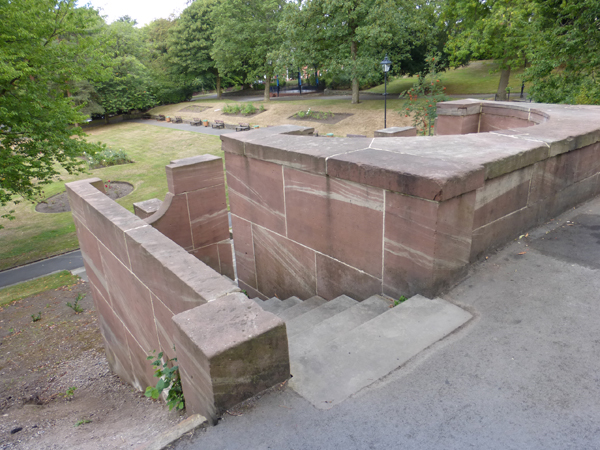
Middleton
 Located seven miles south of
Rochdale, Middleton has the appearance of a
"typical" Lancashire industrial town, but Middleton
is far from typical. The town has an ancient past
and remnants of it remain into the 21st century.
 The history of Middleton is closely
associated with the lives of four of its residents.
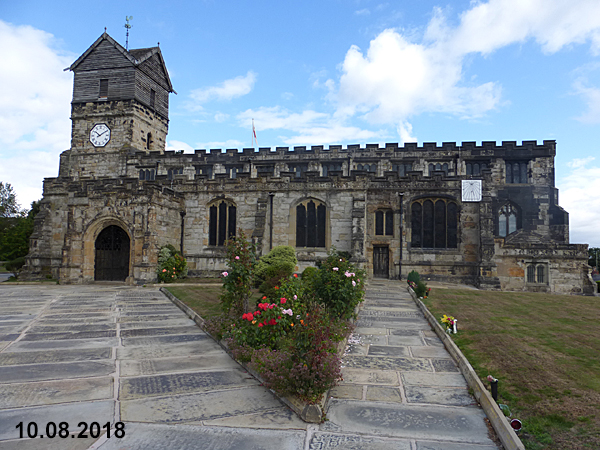 The early years are associated
with Thomas Langley, who was Prince Bishop of
Durham from 1406 until 1437 and three times Lord
Chancellor of England. Evidence of Langley's influence
in Middleton can be seen in the Parish Church, St.
Leonard's. In 1412 Langley rebuilt what was a Norman
Church and consecrated it. The church has a wooden
tower, one of only three in the country. The exact
reason for the wooden tower is unclear. It was
suggested that there was concern that the ground was
too soft to support a stone structure, but that seems
unlikely. It may be as simple as the fact that it was
less expensive to build. It also has a stained glass
window depicting Middleton Archers who fought at the
Battle of Flodden Field, as such is it regarded as the
oldest war memorial in existence.
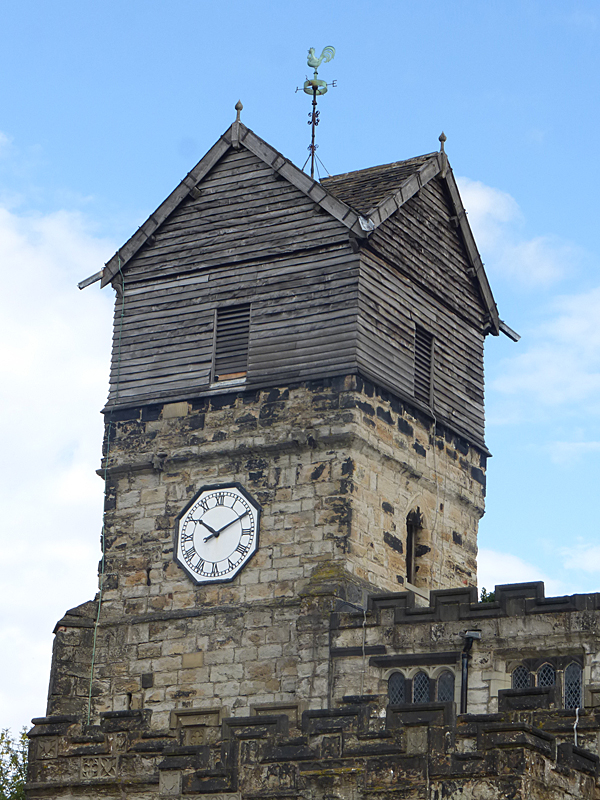 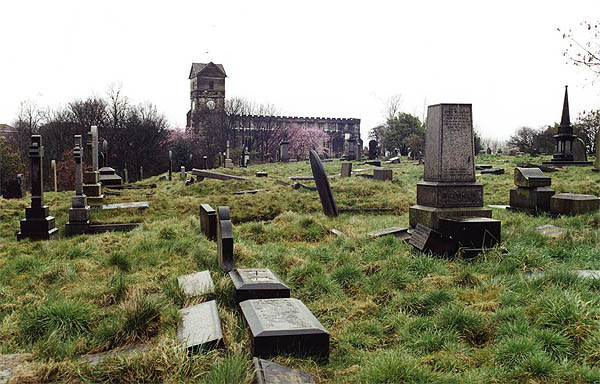 Langley was also responsible for founding the Middleton Grammar School. He added a chantry to the church with the intention of it being used for the education of local children. In 1572 Queen Elizabeth I granted letters of patent to the school, and a new school building was completed by 1586. 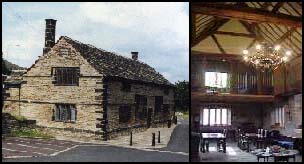 In 1438 Sir Ralph Assheton began the 327 year tenure over the Middleton estate by the Assheton family. The family, like all families, seems to have had its high and low points. Sir Ralph left a rather sinister impression of people and was known as the "Black Knight of Assheton". In fact, a 500 year old tradition in Ashton-under-Lyne of parading a straw figure through the town, known as "Riding the Black Lad", is connected with Sir Ralph. The ceremony commemorates the hatred borne by the residents who suffered his cruelty and oppression. On the other end of the scale Ralph's grandson led the famous Middleton bowmen at the Battle of Flodden in 1513 for which he received a knighthood. Assheton's archers were part of an English army that met the Scottish Stuart Army led by James IV of Scotland. The disastrous confrontation on the 9th of September 1513, on Brankstone Moor, resulted in the death of 10,000 Scots and James IV himself. After the battle Assheton dedicated his standard and armour to "St. Leonard of Middleton" and they were placed in the Parish Church. The Middleton estate stayed in the Assheton family until, in the absence of a male heir, a daughter of the family married Lord Suffield. and the Suffields became the lords of Middleton manor. There are a number of artifacts of the Asshetons in the Middleton Parish Church, including brasses of Richard Assheton and his wife dated 1618. Their children are shown on a separate brass. There is another brass of a priest investments which is inscribed in Latin, "Master Edmund Assheton, Rector of this Church" and dated 1522. This was the brother of Sir Richard Assheton of Flodden Field. Middleton Hall, the home of the Assheton family, was
already falling into rack-and-ruin by the end of the
18th century. It was partially rebuilt, but then in 1845
it was demolished and a cotton mill was erected on the
land. 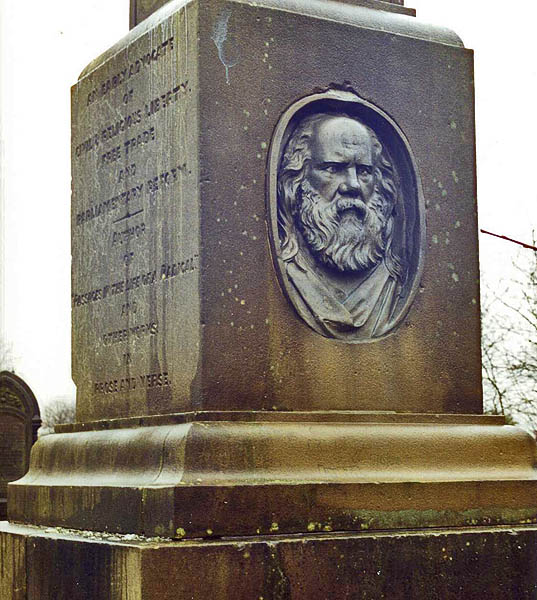 Samuel Bamford, who is buried in the church yard and commemorated by a memorial erected over his grave, was prominent in the struggle for repeal of the Corn Laws and electoral reform. He organized a Hampton Club in Middleton for local people wishing to debate the issue of universal sufferage. He led a group of Middleton people to the meeting on St. Peter's Field which turned into the Peterloo Massacre. Bamford was a poet and a respected writer of Lancashire dialect. 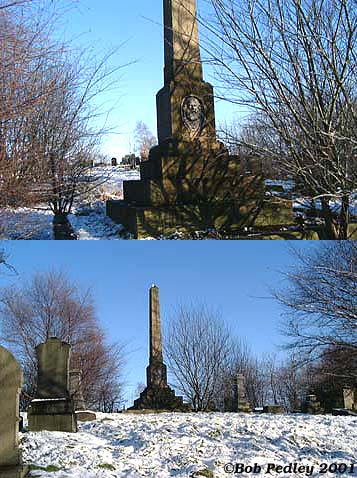 Life around the country and particularly in Lancashire was often turbulent during the period when Bamford lived in Middleton. There were a number of issues which from time to time escalated to violence. The textile industry was going through a period of change as hand spinning and weaving was being replaced by steam powered, mill-based, mechanization. This changed the economics of the trade and prices paid for cloth spiraled downwards. Hand weavers faced poverty and saw the machines as their nemesis. There were numerous incidents of vandalism where groups of workers broke into mills and destroyed machinery. These men were named after a young man from Leicester who had taken a hammer to "square his needles" destroying a knitting machine. His name was Ludlam and the machine vandals were known as Luddites. In 1812 several thousand Luddites were reported to have surrounded the mill of Daniel Burton and Sons. When the mob attacked the mill, they were repelled by defenders who were lying in wait for them. Four men were killed by gun fire from the mill and a number injured. The mob reacted by turning their attention to Burton's home burning it to the ground. This precipitated the dispatching of cavalry from Manchester to bring an end to the unrest. The fourth person to
touch the town of Middleton was Edgar Wood.
Born in the 19th century, Wood was apprenticed to a
firm of Manchester architects and, during the early
years of the 20th century, applied his considerable
skill to the design and construction of buildings in
Middleton, Huddersfield, and Manchester. His handiwork
can be seen throughout Middleton in the form of
private homes, shops, schools, and churches.
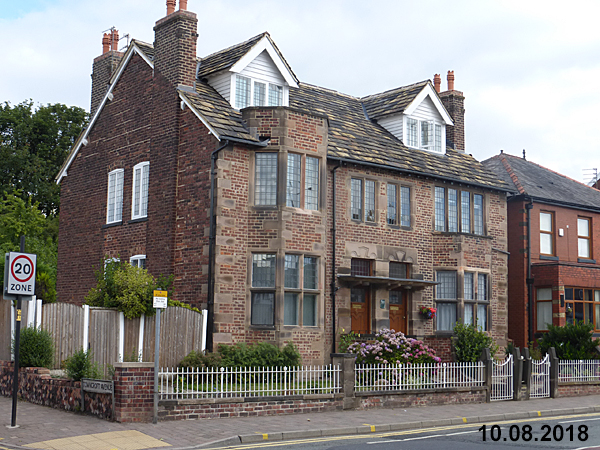 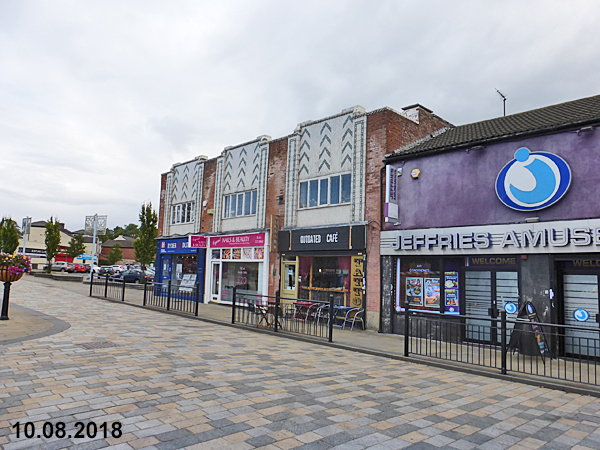 
Long Street in Middleton contains a number of links to the town's history. On the west side of the street lies Edgar Wood's Long Street Weslyan Church and schools built in 1899 (above). This is Wood's largest church. Constructed in brick and red sandstone; it is an imaginative combination of free-Gothic style with influences from Wood's interest in Art Nouveau. Wood also designed the Manchester and Salford Bank which is located a short walk from the church. 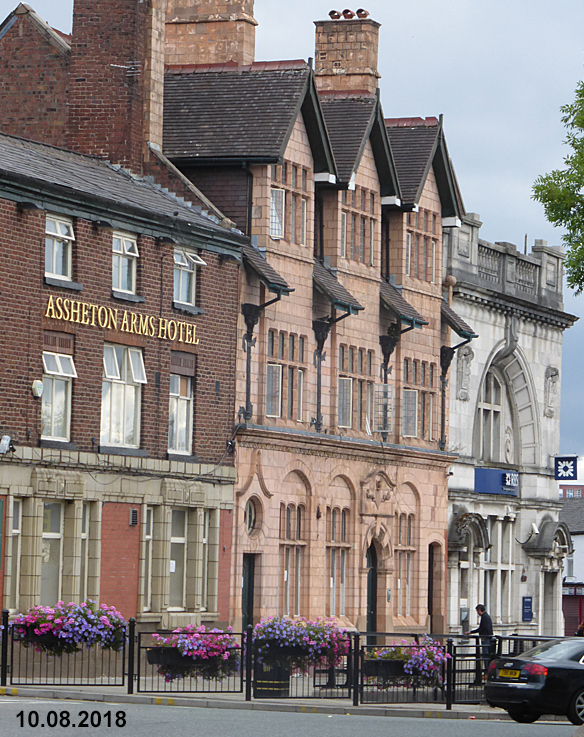 Further up Long Street from the church, on the same
side, is the Old Boar's Head Inn which, according to the
stone lintel in the cellar, dates back to 1632. The
building is part of an ancient row of cottages and
operated as a coaching inn. Sam Bamford held his
audience in sway at the Old Boar's Head. 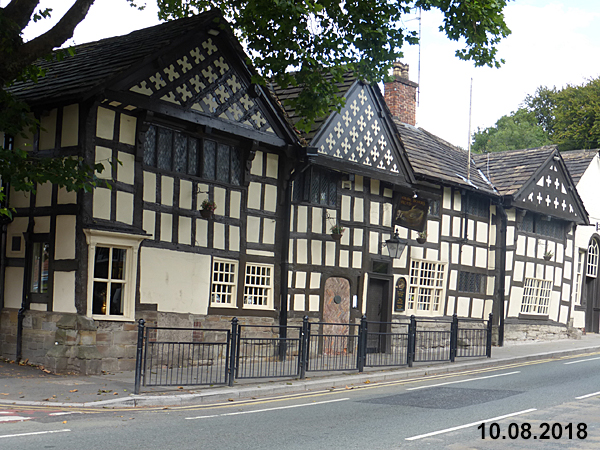 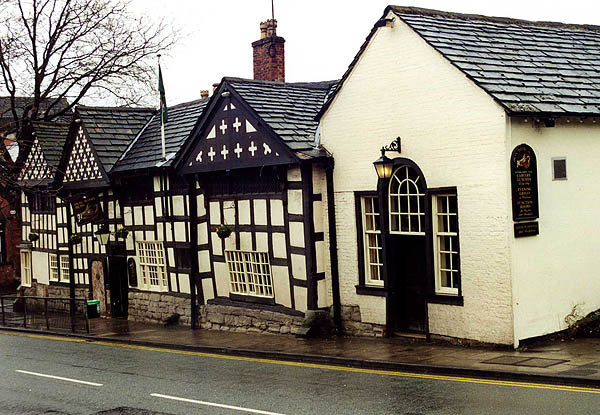 Across the street from the Old Boar's Head you will
find Jubilee Park. Alderman Thomas Broadbent Wood
commissioned his son Edgar to design a flight of steps
to lead up to a contemplation spot in the park. 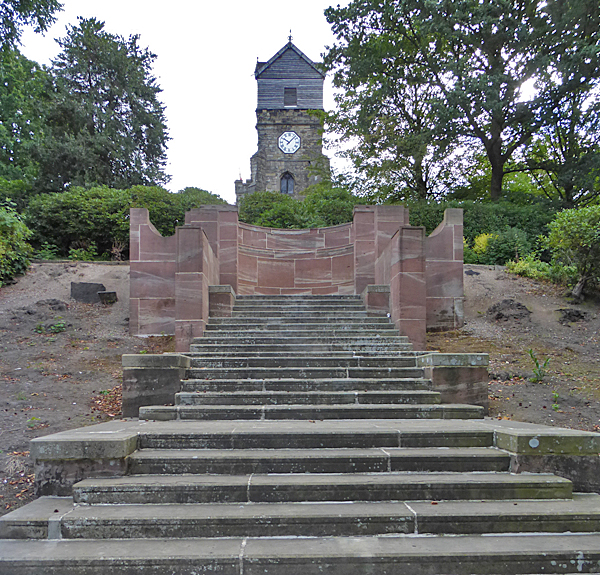 At the top of the steps is the
inscription: 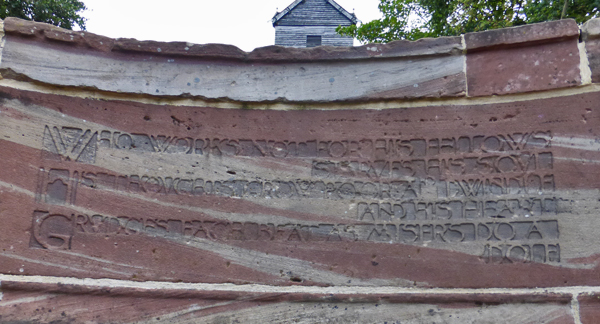
"Who works not for his fellows starves
his soul.
Middleton Town Centre
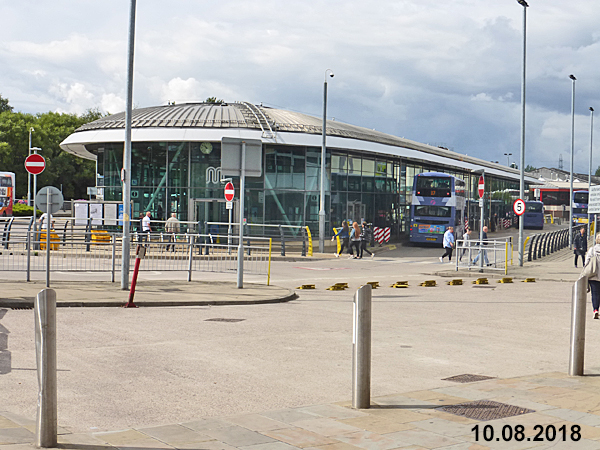 Middleton Library
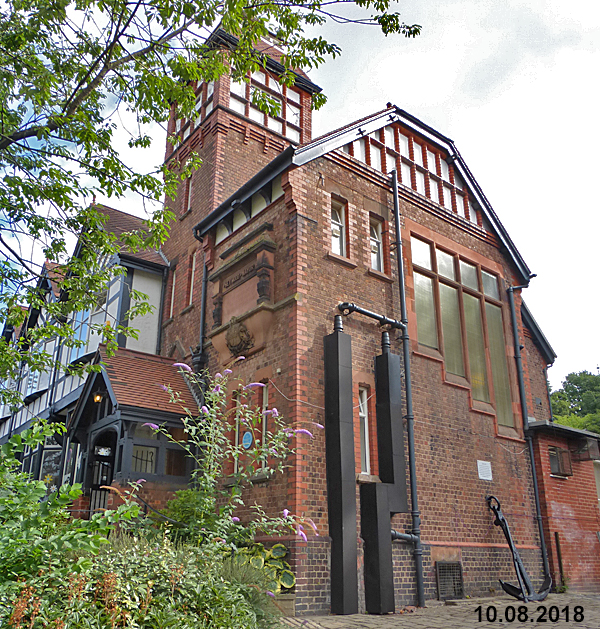 Middleton Arena
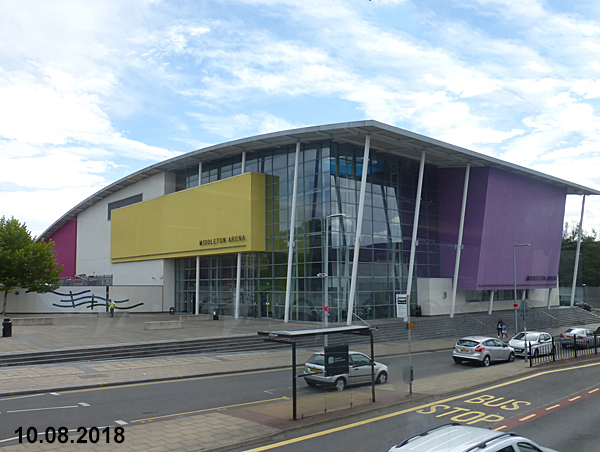 **************** The photograph of the Queen Elizabeth Grammar School is shown with the permission of the Old Grammar School, Middleton, web site |
Close Window

